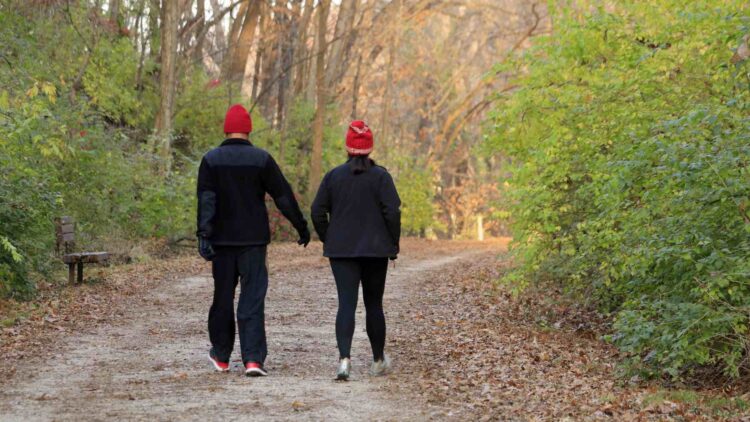Exercising is quite important when it comes to maintaining health, and there are many things one can do to keep healthy, but sometimes all these workout routines and different exercises can be expensive, inaccessible or dangerous, but there is one form of exercise that gets dismissed often for no good reason that could make a very big difference in your health, and that is a brisk walk.
We do not mean to just casually stroll around, although if you have a very low level of fitness you might want to start there to start getting in shape, we mean walking at a reasonably fast pace in order to get your heart moving and blood flowing through your body, which researchers have discovered can lower risks of developing heart rhythm problems.
How a risk walk can improve your health
According to research by a team from the University of Glasgow, walking pace plays a notable role in heart health. Individuals maintaining an average speed of 3 to 4 miles per hour showed a 35% lower likelihood of developing irregular heart rhythms over a median period of nearly 14 years, compared to those who walked more slowly. Those who walked at a brisk pace, faster than 4 miles per hour, experienced an even greater reduction in risk, at 43%.
Jill Pell, a public health scientist at the University of Glasgow talked about the significance of this study, which recorded plenty of heart rhythm abnormalities, including atrial fibrillation (an erratic heartbeat), tachycardia (a rapid heartbeat), and bradycardia (a very slow heartbeat) “This study is the first to explore the pathways underpinning the association between walking pace and arrhythmias and to provide evidence that metabolic and inflammatory factors may have a role”.
The data that was used was plentiful and provided by the UK Biobank, which holds records on the typical walking pace of 420,925 middle-aged adults as well as more precise timings of walking speed measured for 81,956 of those participants. Only participant’s data that had the precise timing data was used, and from that, researchers could see that more time walking at an average or brisk pace was associated with up to a 27 percent reduction in risk overall.
The findings were clear, according to Pell “Walking faster decreased the risk of obesity and inflammation which in turn reduced the risk of arrhythmia.”
But researchers took into account other factors that are also common causes for heart rhythm issues, but even after doing so, researchers estimate that roughly one-third of the observed link may be explained by the impact of walking on metabolism and inflammation, which also influence blood pressure and body weight.
There is no true detected direct link, since this is an observational study, it just identifying trends by comparing health outcomes among groups with different lifestyle behaviors, such as walking pace, but in order to really cement the link, there should be more studies done on the matter.
But Pell remains confident, according to her “This finding is biologically plausible because cumulative epidemiological studies have shown that walking pace is inversely associated with metabolic factors.”
While a brisk walk is beneficial for all age groups, those under 60, those with high blood pressure, those not classified as obese, and those with two or more existing health conditions seem to be the ones that benefit the most from incorporating this type of exercise into their lifestyle. All types of excercise would be beneficial for this demographic, but especially trying to improve fitness by starting up slow and then continuing to increase speed and time so that all the benefits from not just the exercise but also the getting out of the house apply.

